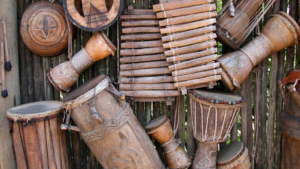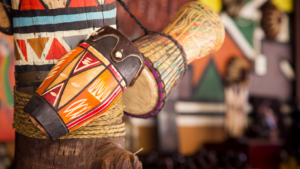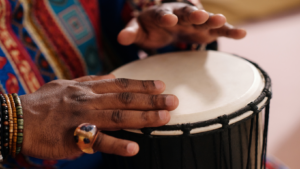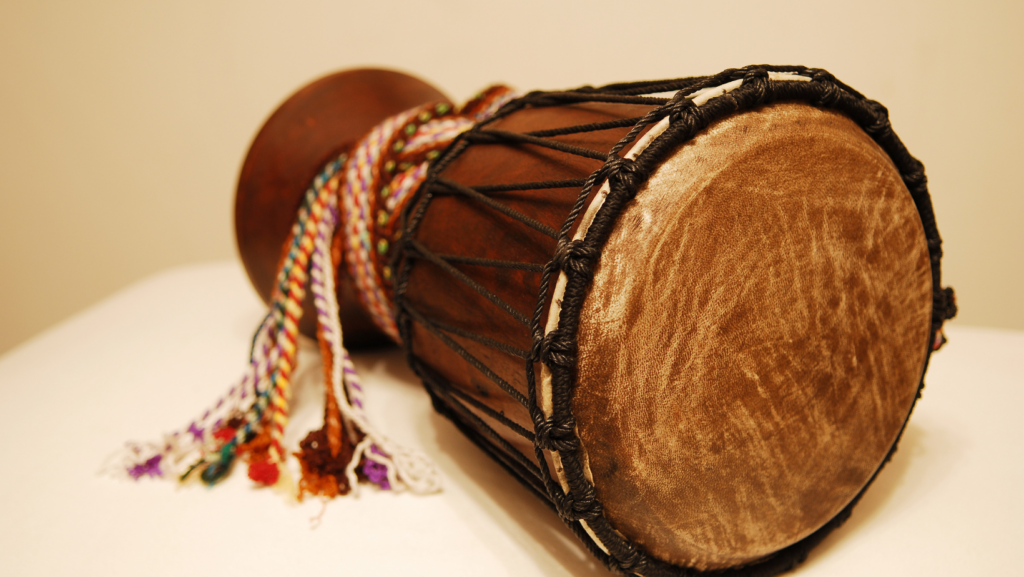African drum music resonates with a rhythm that transcends borders and cultures, weaving a rich tapestry of history and tradition. For centuries, these beats have been the heartbeat of African communities, serving as a vital form of communication and storytelling. From the energetic djembe to the deep tones of the dundun, each drum carries its own unique voice, contributing to the symphony of African life.
The allure of African drum music lies in its ability to connect people through its powerful, primal sounds. It’s more than just music; it’s a communal experience that brings people together in celebration, ritual, and reflection. As the world becomes increasingly interconnected, the global appreciation for this ancient art form continues to grow, inspiring musicians and audiences alike.
African Drum Music
 African drum music is an essential element of cultural expression across the continent. It involves a rich variety of instruments, rhythms, and techniques that highlight the diversity of African traditions. Drums serve as a medium for communication, celebration, and ritual. These instruments often play a crucial role in ceremonies, from weddings to funerals.
African drum music is an essential element of cultural expression across the continent. It involves a rich variety of instruments, rhythms, and techniques that highlight the diversity of African traditions. Drums serve as a medium for communication, celebration, and ritual. These instruments often play a crucial role in ceremonies, from weddings to funerals.
- Djembe: Known for its goblet shape, the djembe produces a range of tones essential to both solo and ensemble performances.
- Dundun: Often paired with a striker, the dundun provides a deep bass sound that anchors the rhythm section.
Rhythms
- Polyrhythm: Many African drum compositions feature polyrhythms, where multiple contrasting rhythms play simultaneously.
- Call and Response: A foundational technique where a lead drum phrase prompts replies from other drummers, creating an interactive musical dialogue.
Techniques
- Hand Techniques: Musicians use various hand positions to produce different sounds on hand drums like the djembe.
- Stick Techniques: Employed on drums like the dundun, sticks allow for dynamic and powerful striking patterns.
Cultural Significance
 African drum music holds profound cultural significance, reflecting the history and traditions of various African societies. It’s an integral part of social and ceremonial life.
African drum music holds profound cultural significance, reflecting the history and traditions of various African societies. It’s an integral part of social and ceremonial life.
Drumming traces back thousands of years in Africa. Ancient civilizations like the Mali and Ghana empires utilized drums for communication and social cohesion. Their historical context underscores their role in unifying these communities, especially during significant events. These instruments evolved over time but retained their core functions in storytelling and history preservation.
Instruments and Styles
African drum music involves a wide range of instruments and styles that reflect the continent’s diverse cultures. Each drum type and musical style holds distinct cultural significance, often linked to specific regions or communities.
Types of Drums
 Djembe: Originating from West Africa, the djembe is bucket-shaped and carved from a single piece of hardwood. It produces versatile sounds with its goat skin head, facilitating a range of tones that convey intricate rhythms.
Djembe: Originating from West Africa, the djembe is bucket-shaped and carved from a single piece of hardwood. It produces versatile sounds with its goat skin head, facilitating a range of tones that convey intricate rhythms.- Dundun: Typically used in ensemble settings along with djembe, the dundun is cylindrical and features cow skin on both ends. Players often use a stick to extract deep bass sounds, integral to creating rhythmic foundations.
- Talking Drum: Known as the hourglass drum, the talking drum imitates human speech through pressurized leather cords. It’s crucial for communication and storytelling in numerous West African cultures.
- Bougarabou: This tall, narrow drum hails from the Jola people of Senegal. Made from carved wood and cowhide, it delivers a rich bass sound, often played solo or in suites of four.
Influence on Global Music
African drum music has profoundly impacted music worldwide, weaving its rhythms into various genres and modern musical expressions.
African drum music’s intricate rhythms have led to the creation of fusion genres that combine traditional beats with contemporary styles. Afrobeat, popularized by Fela Kuti, merges indigenous drum patterns with jazz, funk, and highlife elements, resulting in a dynamic sound celebrated globally. Reggae and salsa also incorporate African percussion, where congas and bongos provide rhythmic layers that reflect African heritage. Genres like samba in Brazil and rumba in Cuba feature drumming techniques that trace back to African slaves, showcasing a rich cultural synthesis in their music.

